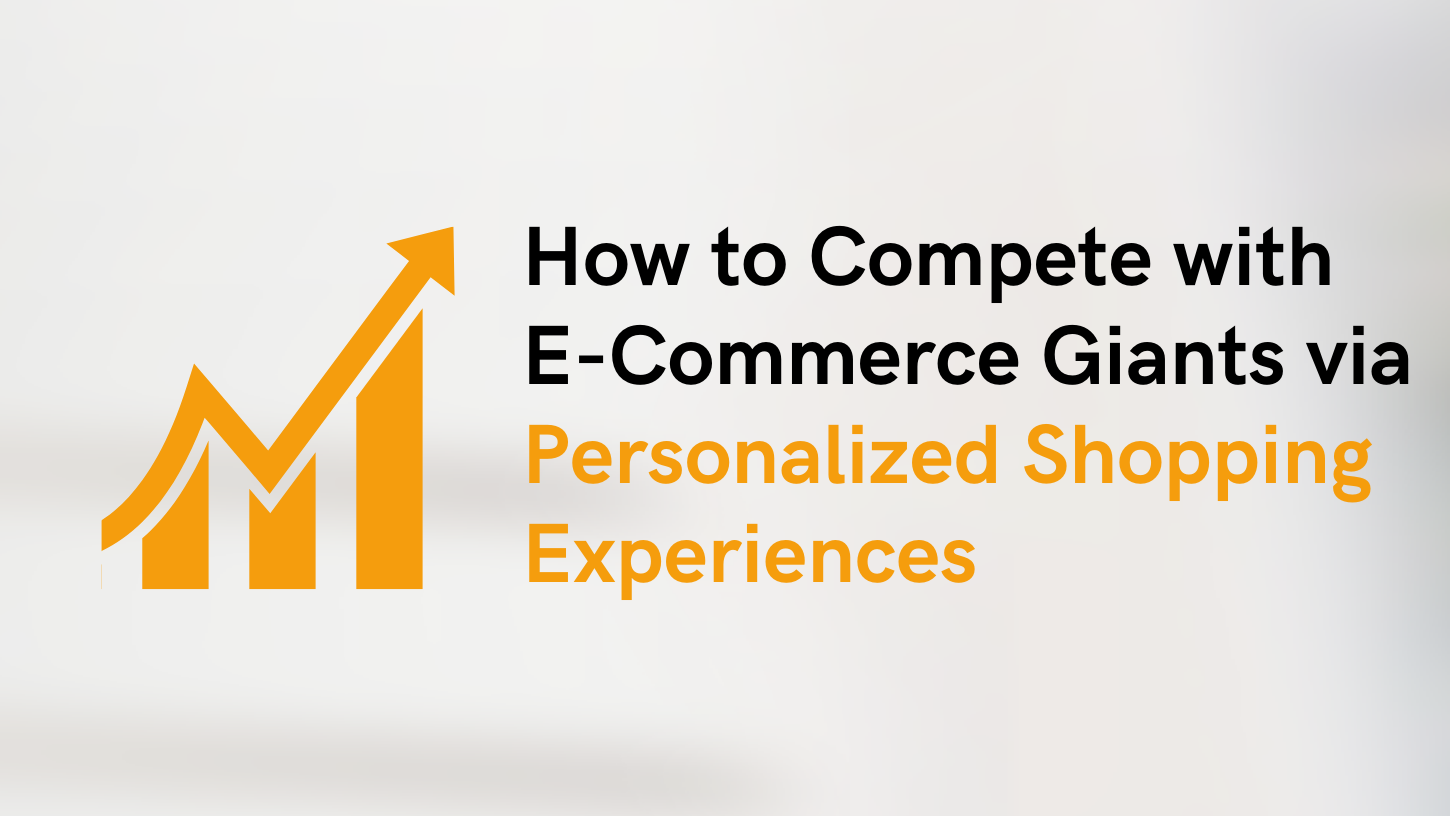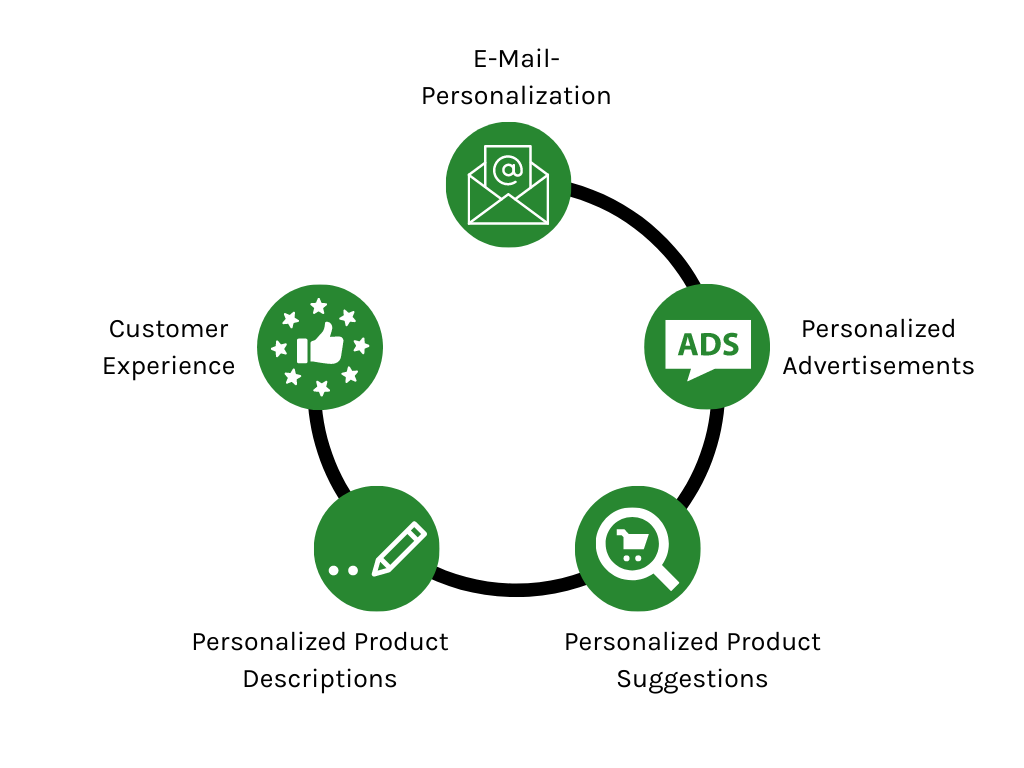Personalized Shopping Experiences: the only Way to Compete with Market Places and e-Commerce giants
Reading Time 7 mins | September 9, 2021 | Written by: AX Semantics

Nowadays, we are constantly being flooded with content and news. Due to the vast amount of information, users are overwhelmed, causing the tendency of ignoring generic content. Customers require brands to understand and respond to their individual needs and wishes. This is where personalization comes in: personalization offers companies the possibility to provide companies with personalized messages, offers and experiences for the individual customer and helps to remain competitive in overcrowded and more complex markets.
The accelerated trend towards online business
Since the beginning of the COVID-19 pandemic, the online trade has enjoyed a global boom as never before. The accelerated trend towards online sales is forcing traditional businesses to go online. The competition in the already strongly competitive sector has been fueled by the transition to online shopping.
Solely in the USA, the e-commerce sales increased in the first three months of the pandemic more than in the previous 10 years. Also in Germany, the online sales increased significantly, and the developments seemed positive at first glance.
Due to the drastic growth, however, the online trade is experiencing a transition and companies are facing a new challenge: increasing competition.
Developments in online trade: 60 % price increase for advertising a customer on Amazon
By Amazon alone, advertising a customer became as much as 60% more expensive within one year. The average “Cost per click” (CPC) increased from $0.75 in May 2020 to $1.20 in May 2021 (Source: Marketplacepulse). In order to increase the competition, Amazon has captured more and more market share and managed to gain an unfair competitive advantage thanks to Prime.
According to a study conducted by Statista, Google developments also took a similar direction with an increase of 3% of the CPC in the first quarter of 2021, relative to the previous year’s quarter. In the meantime, Google Shopping allows customers to make their buying decisions based mainly on the basis of the price, which led to the creation of price comparison tools that e-commerce brings into play to undercut the prices of the competitors.
The ad costs remain at the same high level on Facebook, however, the effectiveness of the campaigns has dropped substantially, and therefore, advertisers are forced to invest intensively.
The costs of online advertising continue to rise, as more and more e-commerce companies compete against each other - with the goal of ranking as high as possible on Google or Amazon. The costs of new customers’ acquisition are growing faster than the e-commerce sector itself, with the largest providers on the market easily undercutting the prices of the smaller and mid-sized e-commerce companies.
Information saturation leads to frustration & high return rates
The boom in e-commerce is not only having an impact on the e-commerce companies, but also on the buyers. Due to the numerous offers and the overload of numbers, customers can either withdraw their purchase, decide against a purchase or choose the wrong product with which they are not satisfied. This drives up the number of returns in e-commerce and ensures that retailers must cover the invoice.
The challenge: building a customer relationship and optimize the customer acquisition in online retail
For e-commerce companies, it is about time they think about how to optimize their customer relationship and acquisition and regain control over the customer relationship. They need a new strategy.
Better purchase experiences for customers through personalization in e-commerce
In online retail, it is particularly difficult to build a closer relationship with the customer in the same way it is possible in stationary retail through personal contact. E-commerce companies face the challenge of optimizing their customer relationship and acquisition and regaining control over the customer relationship.
All can be achieved by offering each individual customer a better purchase experience, making them feel personally addressed and picked up, similar to a sales talk in stationary retail. But how is it possible to offer a better purchase experience to each individual customer?
By enhancing personalization, e-commerce companies can break through their competitors’ general background chatter, stand out from the competition and offer their customers a unique purchasing experience, where they can feel understood and picked up. But what is exactly meant with personalization?
Selling a premium brand as a strategy: success with premium through personalization
The term personalization is a process through which a customer or recipient can be addressed as individually as possible, according to their interests and preferences - content, information, and offers are customized for each customer.
The possibilities of personalization seem endless. When it comes to email marketing, the personalization possibilities include all from a personal greeting in an email with their name in the subject line, to sending completely personalized messages in terms of content. On websites, in e-commerce, or in social media, personalization can be found in another form:
- personalized ads
- personalized product suggestions
- personalized automated product descriptions
For numerous online retailers, the main idea primarily centers on the price of their offered products, in order to be competitive. But the price alone is not the decisive factor that leads customers to make their purchase decision. When a company wants to sell a higher-priced product to the customer and can provide an explanation on a personal level as to why exactly this product is the best one for them, then the explanation becomes an experience for the customer. More unique and personalized experiences are valuable to both the customer and the e-commerce company than a bargain. Companies need to start competing on personalized experiences if they want to become premium and stop competing on price.
E-commerce stores that focus on selling premium products and personalize their content reap a variety of benefits: higher profit margins, fewer returns, and more satisfied customers.

Personalization in online retail through automated content generation
The personalization measures that most systems come up with automate the addressing of each customer. However, it is not possible to adjust each individual textual content to the various interests of the customers. For the individual adjustment, many text blocks would have to be written manually, and this would be enormously time-consuming, which online retailers understandably tend to avoid. Thus, otherwise well-optimized online stores have significantly less optimized product detail pages.
With the help of automated content generation, text content can be adjusted and automated for each customer, so that new content can be generated in context, depending on the customer journey. This is content personalization.
Personalized content for each visitor on every visit
Through the personalization of text content on the product detail pages, product descriptions are completed with arguments that strengthen the customer connection to the retailer. This makes it possible to:
- stand out from other competitors and platforms
- develop good product pages
- transform potential customers into buyers
- increase shopping carts
- reduce returns
Online retailers have a great amount of customer data that can be used to turn any product page into a complete, personalized offer for the individual customer. The companies have to create personalized content using these different pre-existing data sources. This is possible through a Natural Language Generation (NLG) software.
Automatic personalization of product descriptions in online retail
Automated content generation uses software to generate text whose information base originates from a structured data source. AX Semantics offers a flexible Saas NLG tool that uses DSGVO behavioral data and psychographic analysis, to create personalized content for each viewer of a product. In this way, content from websites can be fully personalized.
The solution: customer experience optimization with AX Semantics
With the Customer Experience Optimization Tool from AX Semantics, which focuses on a hyper-personalized customer approach, individual customers and visitors can finally be treated individually and in this way, their various needs can be met. With the help of the `Personalized Commerce` that is connected with the product description generator, the software creates, tests, and optimizes the content of product pages, in order to personally pick up each individual customer and thus raise the probability of increased conversion.
Using only first-party, real-time user data, AX Personalized Commerce creates a unique user experience in the form of individually targeted product descriptions, category pages, and purchase incentives, while also remaining GDPR and CCPA compliant.
